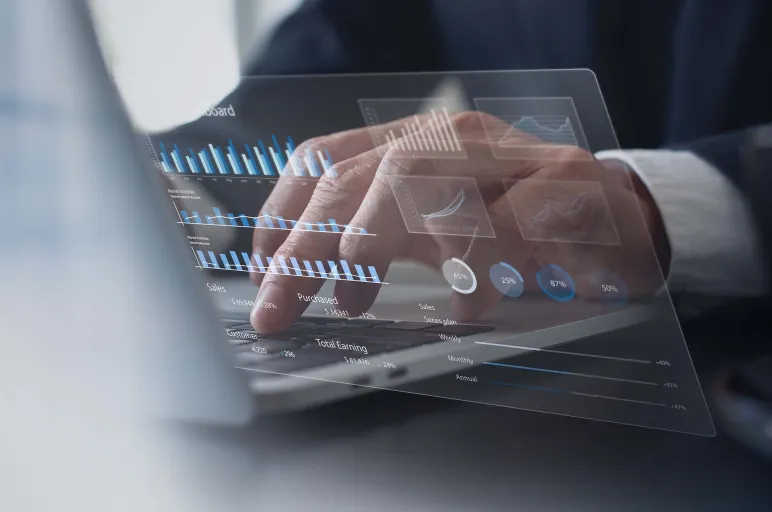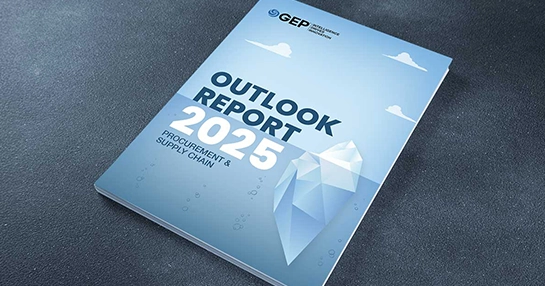
Future-Proofing Procurement Accounting: The Impact of AI, ESG, and Analytics
- AI-driven procurement accounting enhances efficiency by automating cost analysis, risk assessment and compliance tracking.
- Sustainability-focused financial strategies integrate ESG metrics, carbon accounting and supplier audits for long-term value creation.
- Real-time financial insights empower procurement teams to optimize cash flow, mitigate risks and drive data-backed decision-making.
April 10, 2025 | Procurement Strategy
Have you ever considered how much money slips through the cracks due to inefficient procurement accounting? Hidden costs, missed savings opportunities, and financial misalignment can silently drain profitability.
For supply chain and procurement professionals, procurement accounting may seem like a back-office concern, but a strong grasp of this financial function is essential for optimizing procurement workflows, reducing costs, and mitigating risks. It’s not just about tracking invoices—it’s about strategically aligning financial practices with procurement objectives to drive overall business success.
What is Procurement Accounting?
Procurement accounting is the process of managing and recording financial transactions related to the purchase of goods and services within an organization. It ensures that procurement activities are authorized, aligned with budgets, and accurately documented. This includes tracking purchase orders, verifying invoices to prevent discrepancies, coordinating with accounts payable for timely supplier payments, and allocating expenses to the correct departments or projects.
Additionally, procurement accounting supports compliance with financial policies and regulations, ensuring transparency and facilitating audits. It plays a crucial role in maintaining financial accuracy and optimizing purchasing processes.
The Strategic Importance of Procurement Accounting
Today, procurement accounting is about aligning financial management with procurement strategies to create value across the supply chain. Key components include:
Integrated Financial Alignment
Ensuring that procurement decisions are closely tied to corporate financial goals, optimizing working capital and cash flow.
Risk-Adjusted Decision Making
Utilizing predictive analytics to assess supplier risks, geopolitical influences, and market volatility.
Value Beyond Cost Savings
Focusing on supplier innovation, sustainability metrics, and long-term partnerships rather than just cost-cutting.
Technology’s Role in Procurement Accounting
1. Automation of Procurement Processes
- Purchase Orders & Approvals: Automated workflows ensure POs are generated, approved, and matched with invoices systematically.
- Three-Way Matching: Systems automatically verify invoices against purchase orders and delivery receipts, reducing manual errors and fraud.
2. Real-Time Data & Visibility
- Cloud-Based ERP Systems: Enable real-time tracking of expenses, outstanding payables, and procurement trends.
- Dashboards & Analytics: Provide insights into supplier performance, spending patterns, and budget adherence.
3. Cost Control & Budgeting
- Spend Analytics: AI-driven tools analyze past spending to optimize procurement strategies and reduce waste.
- Pre-Approved Vendor Lists: Ensures spending is within contractual agreements to avoid cost overruns.
4. Compliance & Risk Management
- Audit Trails: Digital records maintain a transparent history of transactions, aiding in compliance and fraud prevention.
- Tax & Regulatory Compliance: Automated tax calculations and reporting ensure adherence to financial regulations.
5. Supplier Relationship Management (SRM)
- Automated Payments & Reconciliations: Integrations with banking systems ensure timely payments and minimize disputes.
- Contract Management: AI-powered contract tracking ensures compliance with negotiated terms.
Advanced Strategies for Optimizing Procurement Accounting
1. Dynamic Supplier Segmentation
Traditional supplier segmentation based on cost or geography is no longer sufficient in today’s complex procurement landscape. Forward-thinking organizations are adopting dynamic segmentation models that assess suppliers based on innovation capacity, risk exposure, and environmental, social, and governance (ESG) performance. By integrating these factors into procurement decisions, businesses can strategically allocate spending to high-value suppliers who drive efficiency, mitigate risks, and contribute to long-term sustainability goals.
2. Real-Time Financial Monitoring
Static financial reporting can leave organizations reacting to procurement issues rather than proactively managing them. Implementing real-time financial monitoring through interactive dashboards allows procurement teams to track spend against budgeted forecasts instantaneously. This real-time visibility helps identify deviations early, enabling immediate corrective actions such as renegotiating supplier terms, adjusting order quantities, or reallocating budgets before minor discrepancies escalate into major financial setbacks.
3. Collaborative Contract Management
Rather than relying on rigid, transactional contracts that focus solely on cost and delivery terms, procurement teams are shifting toward collaborative agreements that incentivize supplier performance. These contracts embed reward structures tied to innovation contributions, sustainability initiatives, or risk mitigation efforts. By fostering long-term partnerships with key suppliers, businesses can enhance supply chain resilience, encourage process improvements, and drive mutual growth beyond simple cost reductions.
4. Scenario Planning for Risk Mitigation
Market volatility, geopolitical shifts, and raw material price fluctuations can create unforeseen financial challenges. Advanced scenario modeling tools allow procurement teams to simulate the financial impact of various procurement strategies under different conditions. Whether assessing the potential effects of currency fluctuations, supplier disruptions, or changes in demand, scenario planning enables data-driven decision-making, reducing uncertainty and strengthening procurement accounting strategies against external shocks.
Addressing Challenges in Procurement Accounting
Data Fragmentation:
Many organizations still struggle with siloed data systems that hinder comprehensive financial analysis.
Regulatory Complexity:
Navigating ever-changing global regulations requires robust compliance frameworks integrated into procurement processes.
Change Management:
Introducing new technologies or processes often meets resistance from teams accustomed to legacy systems.
To address these issues, businesses should focus on fostering cross-functional collaboration between procurement, finance, and IT teams while investing in training programs that upskill employees on emerging tools and methodologies.
Emerging Procurement Accounting Trends
The next decade will bring transformative changes to procurement accounting. Key trends include:
Hyper-Automation:
Combining AI with robotic process automation (RPA) will eliminate manual intervention in routine tasks like invoice reconciliation or contract renewals.
AI-Powered Decision Support Systems:
These tools will provide prescriptive recommendations for sourcing strategies based on real-time market data.
Decentralized Finance:
Blockchain-based smart contracts may revolutionize payment terms by enabling instant settlements tied directly to contract milestones.
Streamline Accounts Payable with Invoice Matching
Mastering Procurement Accounting for Strategic Impact
Procurement accounting is more than a functional necessity; it is a strategic lever for driving value across the supply chain. By adopting advanced technologies, aligning finance with procurement goals, and integrating ESG considerations into their practices, organizations can unlock new levels of value. For those committed to thriving in an increasingly competitive environment, mastering procurement accounting is essential for long-term success.
Explore GEP’s AI-Powered Supply Chain and Procurement Software



